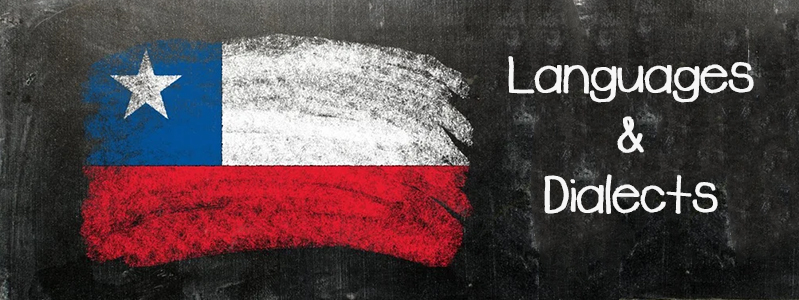Apart from the languages spoken by a few immigrant and indigenous communities that make up the population of Chili, the rest of the country predominantly speaks Spanish. It is why Spanish translation services are frequently sought both in government circles and for business engagements.
Below are 5 important things you ought to know about the languages and dialects commonly used in Chile.
1. Immigrant Influences on Chilean Dialects
According to some credible linguistic sources, presently there are just 9 living or active languages while 7 others are believed to be extinct. The immigration of diverse communities into this region introduced many non-native tongues such as English, Croatian, German, Italian, Vlax Roman etc., over the years.
Consequently, a special type of Spanish that is uniquely Chilean has evolved over a long period of time. There are different varieties of the Spanish dialect being spoken in this country. This has resulted into the birth of distinctive usages in terms of grammar, pronunciation, slang and vocabulary.
And so, if you are in a fix and communication seems not to be getting through, you can resort to engaging Over-the-phone interpreter services to facilitate instantaneous and effective communication.
2. Regional Differences of the Type of Spanish Used
Although a predominant language, the shades of Spanish used in different regions of Chile are not the same. Regions in the far south bordering Argentina use a slightly different form of Spanish from that spoken in the Northern and Central parts.
And in regard to class differences, there is a marked variation in the type of Spanish spoken by persons from different social classes. Most rural areas use forms of Spanish that is fast accented.
When dispensing essential services to foreigners like treatment for illnesses, a Spanish medical interpreter must be present to make communication simple. Chilean Spanish is recognized for its fast accent and peculiar intonations. When talking to non-indigenous people, the Chilean speak very slowly in order to be understood.
3. Indigenous Dialects as A Form of Cultural Independence
In some parts of Chile, the type of language spoken is often viewed as a way of maintaining cultural independence. Language is regarded as an extension of important social and religious practices; and a means of preserving a community’s rich historical heritage.
In most places in Latin America, English is sometimes viewed as a tool for cultural dominance by the Americans or other English speakers. Amongst many traditional communities, refusal to use the English language is considered to be a form of rebellion against cultural imperialism.
4. Language as a Tool for Economic Cooperation
Despite the docile form of resistance to cultural domination by not speaking another language, in many urban areas there is a drive to instill bilingualism. English is therefore seen as a link to the outside world. It is important for bilateral relations and for the advancement of economic cooperation in the larger Asian-Pacific trading bloc.
A belief that is gaining popularity is that if one cannot communicate in English then it is impossible to progressively learn or trade. For that reason, a program referred to as English opens doors is run in all elementary and higher institutions of learning. Its main purpose is to encourage every Chilean to be a fluent English speaker.
5. Other Dialects Spoken in Chile
On top of the Chilean Spanish which is spoken by the vast majority of the population, other languages and dialects in use include:
- Andean Spanish is spoken by a minority in many parts of northern Chile.
- On the large island to the country’s south, the common language is the Chalote Spanish.
- For the few who have hearing disabilities or are hard of hearing, there is the Chilean sign language to rely on.
- Indigenous dialects used a lot include; Mapudungun which is used by over 250,000 people.
- A related dialect known as Chesungun is primarily used by the Huilliche native people. They number just about 2000 in population.
- In the south Quechua is spoken by an estimated 9000 people, while in the north a dialect known as Aymara is used by approximately 10,000 inhabitants.
- The eastern Chilean island whose original name was Rapa Nui is populated by natives who speak a language with the same name. They are just about 5000 in number.
Language Extinction in Chile
One characteristic that some local dialects share in Chile is the danger of extinction. Languages like Rapa Nui, Aymara and Mapudungun are not favored in some circles, and so they are slowly dying. There are a number of other reasons that account for this deterioration.
For instance, Mapudungun is so difficult to teach that many people completely avoid it. It is notorious for using 4 different forms of alphabet. It is the complexities of syntax, grammar and pronunciation that make languages like Kunza and Kakauhua extinct at the moment.
A Program for Saving and Preserving All Languages.
To save languages from going extinct, the government in liaison with the Chilean education ministry has developed a program to help save the indigenous languages.
The key idea is to build a sub sector devoted to communication and languages that will gradually introduce the study of indigenous languages in classrooms. Only in this way does the administration hope to ensure all languages are preserved for posterity.

